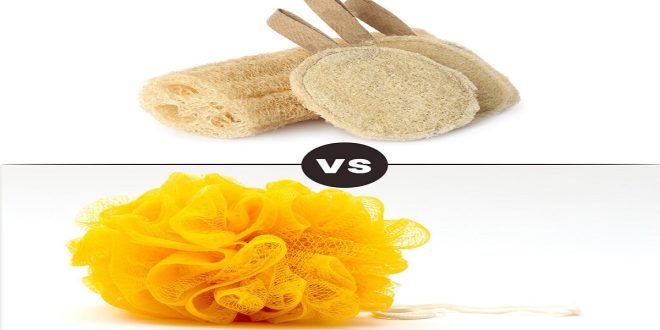In the case of household and personal hygiene, choosing the right tools can significantly impact your health, as well as your hygiene and environmental footprint. Two of the most popular options to clean and exfoliate include natural loofah and artificial sponges. Although both have similar functions, they differ in material, durability, effectiveness, and long-term sustainability. This article delves into the differences and helps you choose which opportunity meets your requirements.
What is a Natural Loofah?
A naturally occurring loofah originates from the dried, fibrous skeleton of the fruit of Luffa Aegyptiaca, also known as Luffa Cylindrica plant. The plant is part of the family of cucumbers and is a favorite in warmer climates.
Natural loofahs are renowned for their rough texture, which makes them perfect for exfoliation. They are completely biodegradable and free of synthetic chemicals, which makes them an environmentally friendly option.
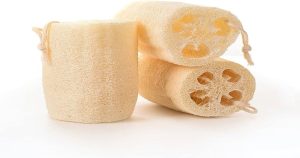
What is a Synthetic Sponge?
Synthetic sponges are created of artificial substances, like polyurethane foam or cellulose. These sponges are usually made to be soft, tough, and adaptable, making them popular for various jobs, including bathing, cleaning dishes, and washing.
Synthetic sponges can be found in various colors, shapes, and textures. They often have anti-bacterial treatments and chemical compounds. However, their environmental impact is a major concern because of their non-biodegradable properties.
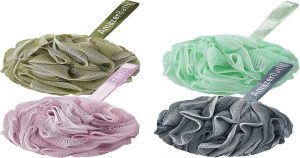
Key Differences Between Natural Loofah and Synthetic Sponges
1. Material and Composition
- Natural Loofah: Based on plant fibers, loofahs are chemical-free and can be described as 100% organic. They are biodegradable, and they decompose naturally after being discarded.
- Sponges made of synthetic materials: Manufactured with petroleum-based products or processed cellulose, synthetic sponges typically contain chemicals that may harm the environment.
2. Skin and Health Benefits
- Natural Loofah: A rough feel of the loofah is perfect for exfoliation, eliminating dead skin cells, and increasing blood circulation. But it can be too rough for people with sensitive skin.
- Synthetic sponges: They are generally soft and gentle on the skin. Some sponges contain anti-bacterial ingredients, but these additives may irritate sensitive people.
3. Environmental Impact
- Natural Loofah: Since they are biodegradable, natural loofahs produce minimal environmental impact. Harvesting and growing them help to sustain sustainable farming practices.
- Synthetic Sponges: Synthetic sponges are a major source of plastic pollution since they don’t break down easily. Once they’re removed from the environment, they could be broken into microplastics, causing harm to marine life as well as ecosystems.
4. Durability
- Natural Loofah: The average loofah lasts 3 to 4 weeks when used regularly. After that, it begins to degrade.
- Synthetic Sponges: Synthetic sponges tend to be more durable and last for many months before showing the signs of wear and tear.
5. Maintenance
- Natural loofah: It is cleaned thoroughly and requires drying following each use to prevent bacterial and mold growth.
- Synthetic sponges: They are easy to keep clean but are still susceptible to bacterial accumulation over time. Many sponges can be machine washed and therefore easy to wash clean.
Pros and Cons of Natural Loofah
Pros:
- Eco-friendly: Made from renewable plant materials and biodegradable.
- Exfoliation: It is ideal for scraping off dead skin cells, leaving skin soft and hydrated.
- Chemical Free: It is safe for those seeking to avoid synthetic products.
Cons:
- Abrasion: It may be too rough for delicate or sensitive skin.
- The short life span: The degradation rate is faster than that of synthetic sponges.
- Maintenance: It requires regular cleaning and drying to avoid the growth of mold.
Pros and Cons of Synthetic Sponges
Pros:
- Lasts: Lasts longer than natural loofahs when used regularly.
- Flexibility: Comes in various forms and textures to suit different purposes.
- The convenience: Easier to clean and maintain than loofahs.
Cons:
- Environmental Harms: Non-biodegradable and contribute to plastic pollution.
- Chemical Exposure: There are additives that could irritate skin or cause harm to the environment.
- Microplastic risk: Fragments from synthetic sponges could cause water pollution.
Which Should You Choose: Natural loofah or artificial sponge
Personal Skincare:
- It is the ideal choice if you prefer exfoliation and organic products, such as using a homemade scrub. It’s a great choice for people who want the most natural, chemical-free skincare routine.
- If you have delicate skin for those with sensitive skin, the use of a gentle synthetic sponge might be more appropriate because of its soft texture.
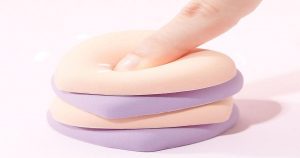
Cleaning Tasks:
- For dishes, for example, an artificial sponge may be more appropriate for tasks like dishwashing due to its strength and durability. Its resistance to wear.
- However, environmentally friendly alternatives such as natural sponges made of cellulose or reusable cloths can balance efficiency and sustainability.
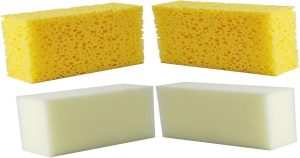
Environmental Consciousness:
- The organic loofah is the most effective option for environmental benefits because it can be composted and doesn’t leave any lasting waste.
- Synthetic sponges aren’t as green. However, some brands provide recycled or biodegradable alternatives to lessen their impact.
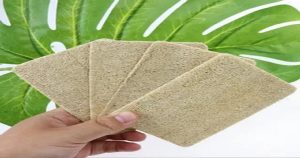
Tips for Maintaining Natural Loofahs and Synthetic Sponges
How to Clean Loofah:
- Rinse thoroughly: Following each use, rinse the area with warm water to eliminate the soap and other debris.
- Dry completely: Hang the loofah in a ventilated area to stop moisture accumulation.
- Sanitize weekly: Mix vinegar and water or boil it for a few minutes to destroy bacteria.
- Replace regularly: Discard after 3-4 weeks or when it begins to degrade.
How to Clean Synthetic Sponge:
- Squeeze and Rinse: Remove excess water following use to limit bacteria growth.
- Disinfect regularly: Microwave a damp sponge to soak in bleach solution for about a minute.
- Avoid harmful chemicals: Some cleaning products can cause the degradation of synthetic sponges quickly.
- Replace if worn: Dispose of sponges that begin to smell or break apart.
Conclusion
The decision between natural loofahs or synthetic sponges is contingent on your preferences. A loofah is the best option if you are a fan of environmental sustainability and prefer organic products. However, the synthetic sponge may be better if you require a sturdy and dependable cleaning tool.
As environmental issues increase, more people opt for eco-friendly alternatives, including compostable and plant-based sponges. With the right choices, you will reap the benefits of having clean skin and a clean home while reducing your ecological footprint.
It is crucial to select an item that matches your lifestyle, needs, and beliefs, whether natural loofahs due to their eco-friendly aesthetic or synthetic sponges to increase their ease of use.
FAQs
What is the main difference between a natural loofah and a synthetic sponge?
The primary difference is the materials they’re made of.
- Loofahs made from natural materials are made of dry fibers from the Luffa plant, which makes them eco-friendly and biodegradable.
- Synthetic sponges are produced with artificial substances like polyurethane or processed cellulose and are not biodegradable.
Which option is better for exfoliating skin?
- Natural loofahs are superior for exfoliating because their rough texture efficiently removes old skin cellulite.
- Synthetic sponges are soft and more appropriate for sensitive skin but less effective for exfoliation with deep penetration.
Are natural loofahs environmentally friendly?
They are 100% biodegradable and are produced from renewable plant sources. They break down naturally and have a lower environmental impact than synthetic sponges.
How long do natural loofahs last compared to synthetic sponges?
- Loofahs made of natural materials generally last 3-4 weeks if used regularly before they deteriorate.
- Synthetic sponges last longer but should be replaced if they exhibit evidence of wear or odor.
Do natural loofahs require more maintenance?
Yes, Natural loofahs require extra care to avoid the growth of bacteria and mold. Natural loofahs can be used to clean surfaces and dishes. Their rough texture aids in rubbing away dirt, although they are more susceptible to wear out than synthetic sponges for more demanding tasks.
Are synthetic sponges harmful to the environment?
Yes, synthetic sponges are a source of environmental pollution.
- They are not biodegradable and usually end up in waterways or landfills, breaking into harmful microplastics.
- Certain brands also provide eco-friendly alternatives made of biodegradable or recycled substances.
 aim specialty health Discover Expert Insights, Empower Your Wellness With Aim Specialty Health Blogs.
aim specialty health Discover Expert Insights, Empower Your Wellness With Aim Specialty Health Blogs.
